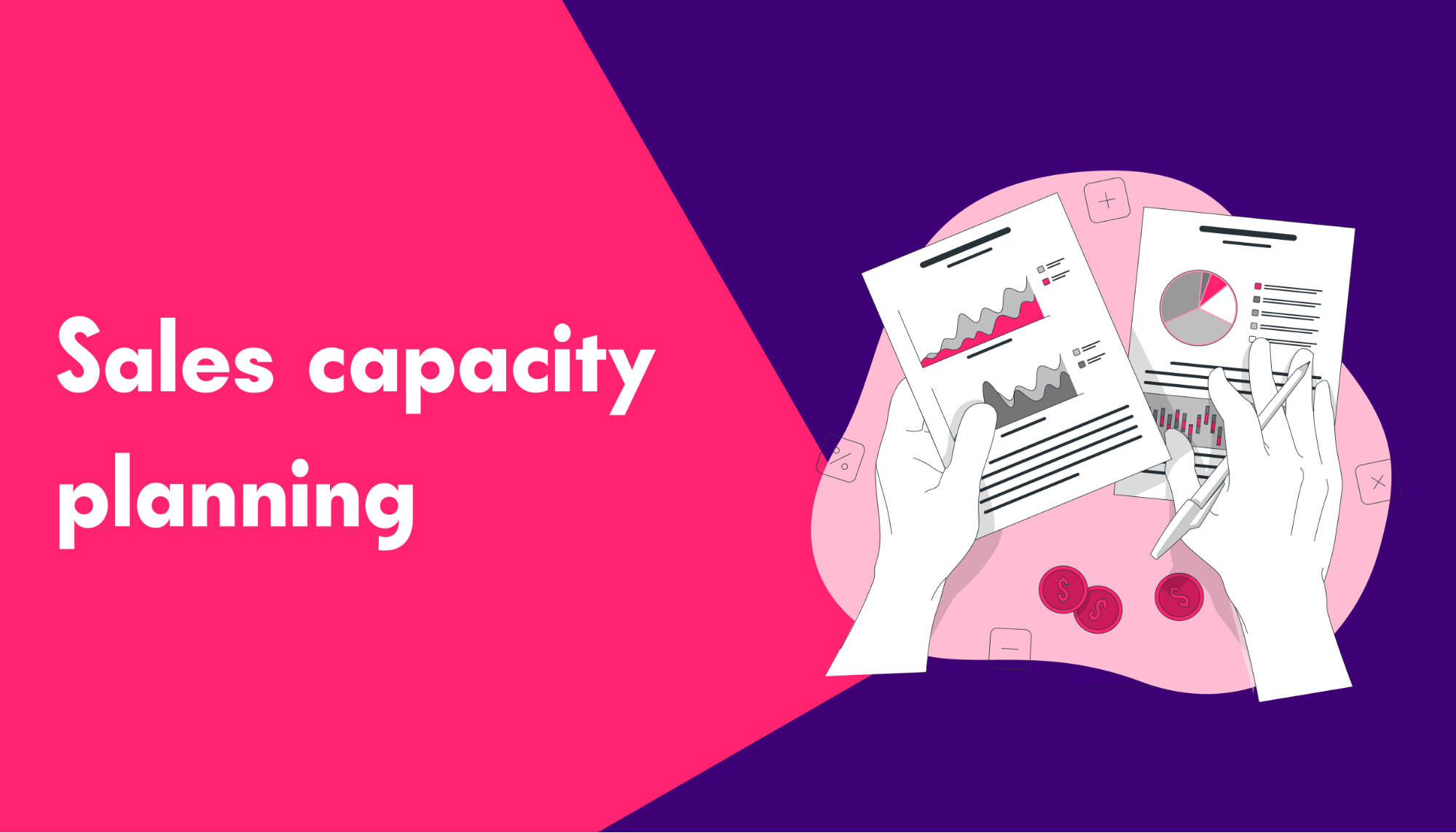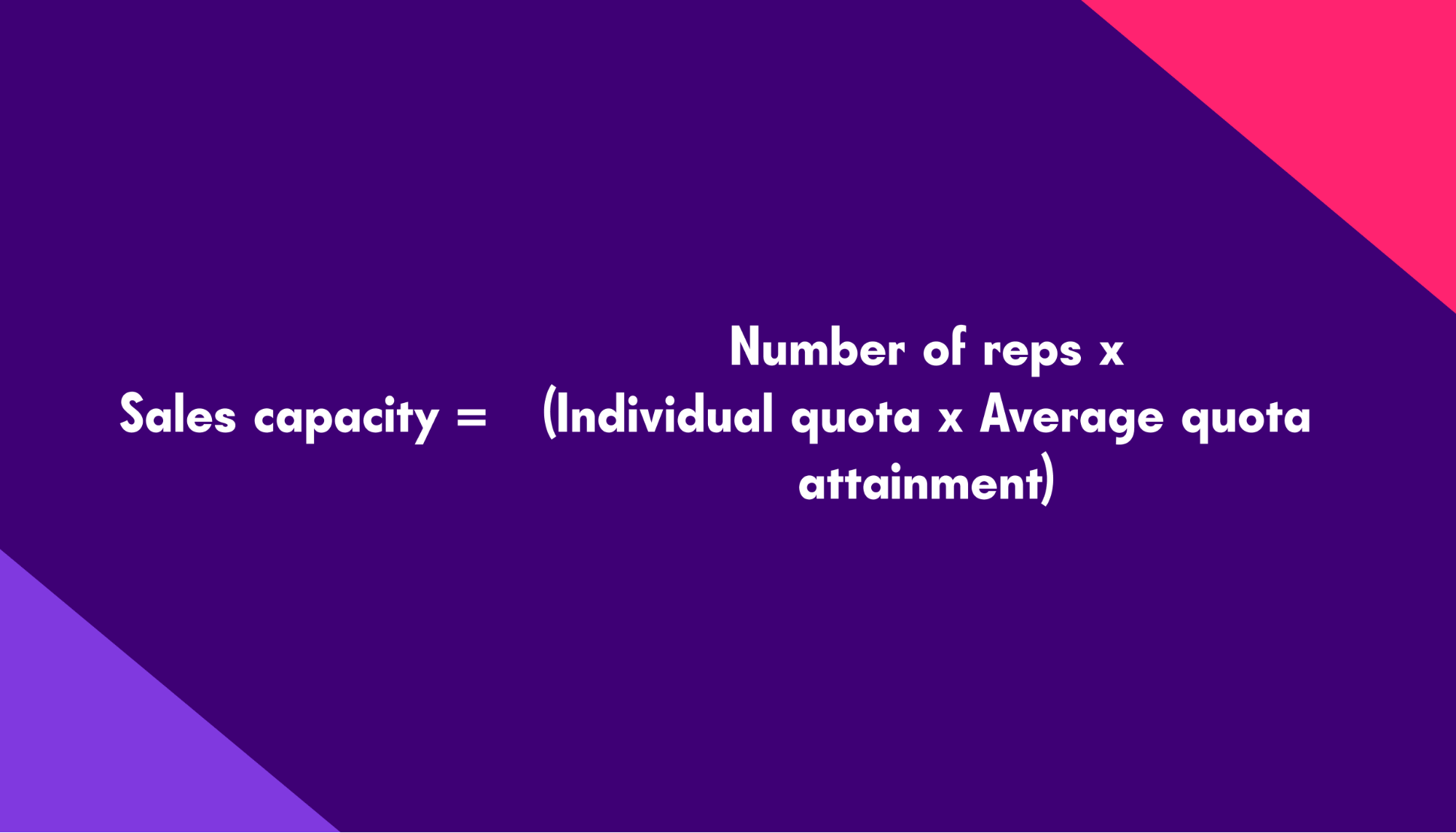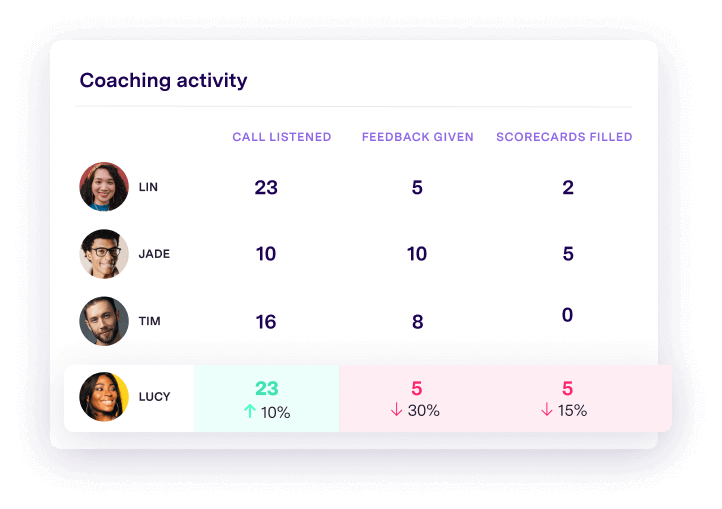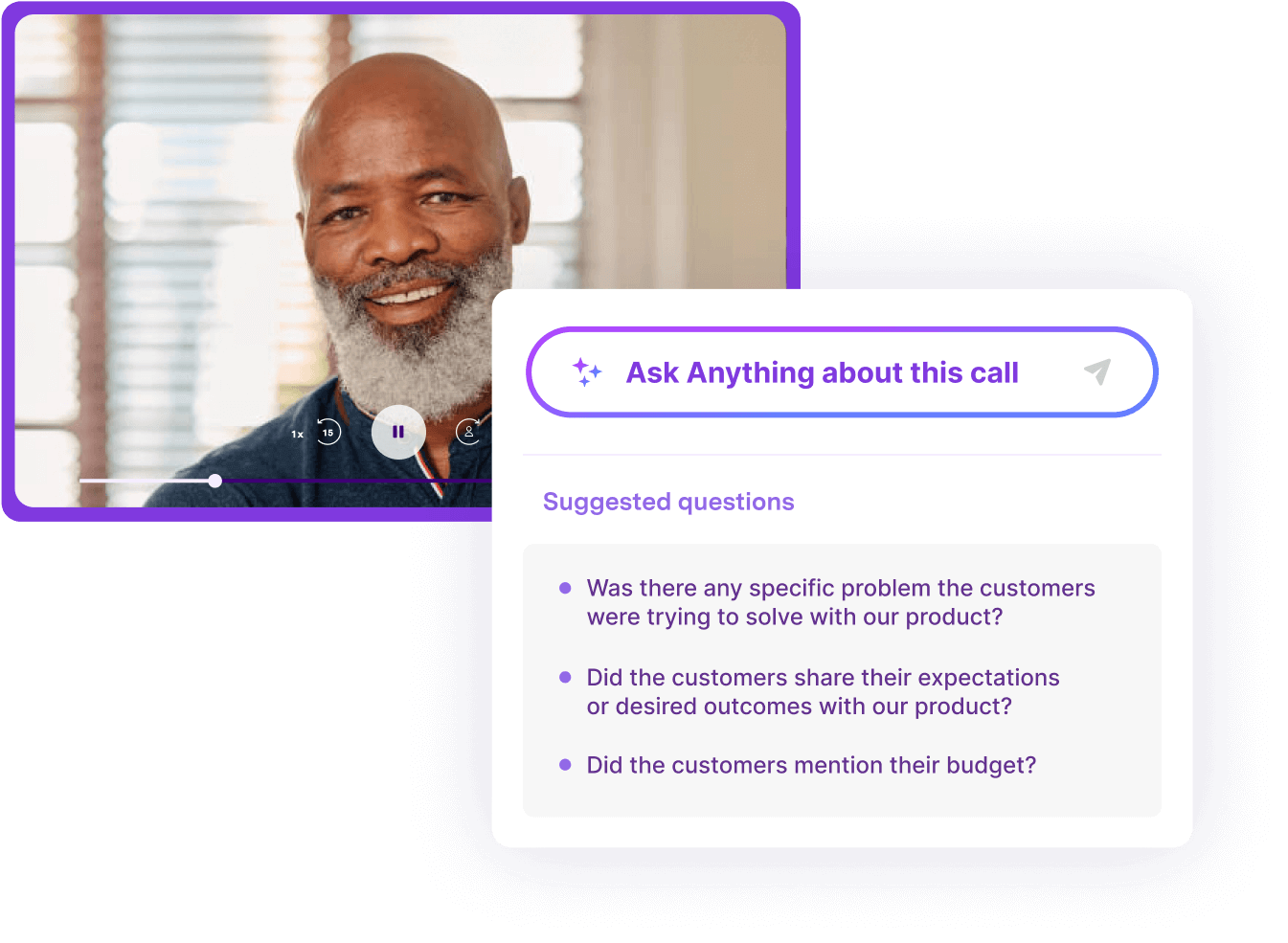Sales strategies
Sales capacity planning: How to use it to drive more revenue

Michael Duncan
Content Author
Published on: February 28, 2025

Is your sales team overworked? Struggling to hit their goals? It might not be their fault, especially if their capacity and their targets are poorly aligned.
When you know what your team is actually capable of, you can set ambitious quotas that drive your team forward instead of leaving them defeated before they even begin.
In this article, you’ll learn what sales capacity planning is, why it’s important, and how to set appropriate targets.
What is sales capacity planning?
Sales capacity planning is the process of estimating your team’s performance potential and aligning it with your revenue goals . Your team’s sales capacity is the volume of activities each rep can carry out as part of their usual duties.
Rather than guessing, take a data-driven approach to predict your revenue potential and identify the number of reps you need to hit your sales goal.
Why is sales capacity planning important?
Sales capacity planning that’s backed by data helps you make better decisions, allocate reps and resources more effectively, and improve sales performance . Use it to find a balance between hiring new sales representatives and maximizing your current reps’ productivity .
Even with the highest-performing sales reps in your industry, you’ll struggle to reach your revenue targets if your sales team is understaffed.
Solve this by using sales capacity planning to determine how many sales representatives your team needs.
It’s not just a case of hiring the minimum number of reps necessary, though.
Sales capacity planning can also help you take advantage of new opportunities:
Our forecast on bookings has a really big impact on our hiring plan, not just for sales but for the entire team that supports sales. If we under-forecast, we might under-invest in areas where we have a huge opportunity.
Our forecast on bookings has a really big impact on our hiring plan, not just for sales but for the entire team that supports sales. If we under-forecast, we might under-invest in areas where we have a huge opportunity.
Effective sales capacity planning can optimize your team’s performance and highlight opportunities for improvement through new sales software or training.
What metrics do you need to create a sales capacity plan?
You’ll need to track several metrics to calculate your sales capacity. They include the following:
- Average deal size: The average value of closed deals over a given period. This helps determine how many deals you need to hit your targets.
- Churn rate: The average number of sales reps who leave your company in a given period. A high churn rate can have a big impact on your capacity. This is also know as attrition rate.
- Annual recurring revenue (ARR): This is the revenue a business generates from its subscriptions or contracts over a year.
- Average quota attainment: The percentage of quota your team (or each sales rep) hits on average.
- Close ratio: The number of deals your team closes on average. It helps clarify how many deals your team will need in its pipeline to hit targets.
- Ramped percentage: The number of fully onboarded reps on your team. Reps who still need training are unlikely to fulfill their potential and hit targets.
- Sales cycle length:The average time it takes for a deal to move from initial contact to closing. A longer sales cycle can reduce capacity, as reps spend more time nurturing leads instead of closing multiple deals.
The best sales software will automatically calculate these above metrics so you don’t have to do that manually.
How to calculate your sales capacity
You can calculate sales capacity in several ways. Some sales capacity models are simple, while others are more complex. In either case, you’ll first need to define your planning period: monthly, quarterly, or yearly.
If it’s your first time calculating sales capacity, start with a basic formula like the following:

For example, assume you have 10 reps who each have a quarterly quota of 100,000 and average quota attainment across your team of 80 percent:
Sales capacity = 10 x (100,000 x 0.8) = $800,000
Your team can generate a maximum revenue of $800,000 each quarter.
That formula is a great starting place, but it doesn’t take into account ramp times or churn . You can’t hire 10 new reps and expect to automatically increase your sales capacity to $1.6 million overnight.
To create a clearer picture of your true sales capacity, you have to factor in the number of new hires you plan to recruit over a given period, their average ramp time , and average turnover.
If you lose two reps on average each quarter and expect to hire two new reps who will operate at 25 percent capacity for the next quarter, then your sales capacity calculation will look like this:
Sales capacity = (10-2) x (100,000 x 0.8) + 2 (100,000 x 0.25) =$710,000
Because you’re likely to lose two reps in the next quarter, you only have eight reps working at full capacity. You also have two reps working at a quarter capacity because of their ramp time.
How to improve your sales capacity
Once you’ve calculated your sales capacity, you may need to improve it.
Hiring additional sales reps is certainly one strategy, but it’s not the only option — or even the best option — according to Dorean Kass, Chief Sales Officer at Neustar:
“The other mistake I see is assuming that growth is driven by capacity — that more reps equals more sales. It’s not that simple. Many factors come into play, including market approach, messaging, and addressing the total addressable market profitably.”
Here are five strategies to improve your capacity without increasing your salary budget:
Optimize territory make-up
Reevaluating how sales territories are structured can have a major impact on sales capacity.
By creating better-defined, more targeted territories, reps can focus on high-potential opportunities, leading to higher quota attainment and increased efficiency. On the flip side, over-hiring can shrink territories, spreading opportunities too thin and diluting individual rep performance.
Instead of simply adding headcount, refining territory distribution ensures that each rep has the right mix of accounts to maximize their selling potential.
Improve your hiring and turnover
You’ll never be able to fulfill your revenue potential if you are constantly losing your top sellers.
Make retaining them a priority by implementing one or more of the following tactics:
- Improve your sales compensation plans.
- Offer promotion opportunities as often as possible.
- Expand your benefits package.
Holding onto more sales representatives not only reduces hiring costs, it also means you lose less time to onboarding.
Next, turn your attention to your hiring process.
Developing a solid hiring strategy is the first step toward building a more balanced sales organization…Identify the innate skills needed to succeed and the learnable skills. Are we clear about the innate sales skills needed on our team, and what’s our method for identifying candidates with those skills?
Developing a solid hiring strategy is the first step toward building a more balanced sales organization…Identify the innate skills needed to succeed and the learnable skills. Are we clear about the innate sales skills needed on our team, and what's our method for identifying candidates with those skills?
The better you get at identifying and onboarding high-quality candidates the higher your sales capacity ceiling will be.
Boost rep performance
You don’t need to hire more staff if you can increase your sales team’s performance . Combine sales activity tracking with pipeline management to spot individual and team weaknesses. Then, implement a coaching program to fix them.

You don’t have to hire a dedicated sales trainer to implement this practice.
With Gong’s Ask Anything feature, for example, SDRs and sales leaders can identify coaching opportunities and replay crucial touchpoints instantly rather than replay hours of calls or reread transcripts and call summaries.

With Ask Anything, reps can quickly get relevant information — including the full context of a deal — across their entire pipeline, and get real-time recommendations for the next best steps in a deal.
Increase quotas and improve sales strategies
Improving rep performance addresses one piece of the sales capacity equation. Increasing quotas addresses the other.
You already know that sales reps are competitive by nature. Many will raise their game to meet more ambitious sales quotas . So, why not try increasing your sales targets?
Use pipeline data and revenue forecasts to make quotas as challenging (but attainable) as possible, and see if your reps rise to the challenge.
If they don’t, consider optimizing your sales strategy to give them a break. That’s the approach Paul Butterfield, former VP of Global Sales Enablement at Instructure, takes:
I look at things like what is the percentage of our reps achieving a hundred percent or better attainment? So I want to see improvement in the percentage of quota attainment. Cross-selling was a focus, and our salespeople tended to lead with a piece of the product or features.
I look at things like what is the percentage of our reps achieving a hundred percent or better attainment? So I want to see improvement in the percentage of quota attainment. Cross-selling was a focus, and our salespeople tended to lead with a piece of the product or features.
Eliminate administrative work
A final way to increase sales capacity is to give reps more time to sell. A lot of administrative work like updating CRM files and sending follow-up emails can now be automated thanks to AI-powered sales tools .

Generative AI can even complete large chunks of the sales process, including email personalization.
This has an incredible impact on sellers’ productivity . In Gong’s State of Sales Engagement study, reps said they spend an average of 12.1 hours each week writing emails. This time is split between customizing pre-written templates and writing emails from scratch. There’s no need to waste those hours, when Gong’s generative AI is at their fingertips.
Increase your sales capacity with Gong
Hiring new reps isn’t the only way to improve your capacity. Integrating an AI-backed sales solution that supports data-driven decisions can also boost your team’s productivity and quota attainment.
With Gong, sales leaders get the data and coaching insights they need to optimize sales capacity and increase rep performance. With real-time revenue AI and better resource allocation, sales reps can spend more time selling.
Ready to learn how to increase your sales capacity? Book a demo with Gong today.

Content Author
Michael Duncan is the director of Strategy and Operations at Gong. He has lead the the internal launch of our forecast and analytics products. Michael has been in Strategy and Operations for over 10 years and has been at Gong for the last 4 years. Michael is passionate about Revenue Intelligence, GTM strategy and Golf. Connect with him on Linkedin.
Discover more from Gong
Check out the latest product information, executive insights, and selling tips and tricks, all on the Gong blog.



